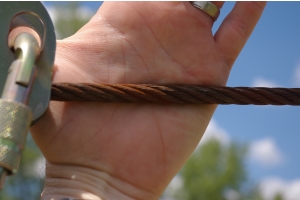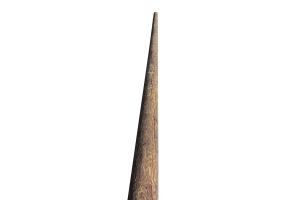Gear and Equipment
-
July 07, 2022
A rock climbing harness is one of the most important pieces of gear that you can own. It is essential for your safety when you are climbing, and it can make a big difference in your comfort and performance. There are many different factors to consider when choosing a harness, so it is important to do your research and find the one that is right for you.
Materials
Harnesses are made from a variety of materials, including nylon, polyester, and Dyneema. Each material has its own advantages and disadvantages. Nylon is strong and durable, but it can be heavy. Polyester is lighter than nylon, but it is not as strong. Dyneema is the lightest and strongest material, but it is also the most expensive.
Types of buckles
There are two main types of buckles used in rock climbing harnesses: two-piece buckles and four-piece buckles. Two-piece buckles are the most common type of buckle. They are easy to use and they are relatively secure. Four-piece
-
November 06, 2021
Cargo nets are a versatile and useful tool that can be used for a variety of purposes. They are ideal for storing and transporting heavy objects, and they can also be used to create temporary barriers or enclosures. Cargo nets are also a popular choice for playgrounds, ropes courses, obstacle courses, ninja courses, and other recreational structures.
Cargo nets are made by weaving together a series of ropes or cords. The ropes or cords are typically made of polydacron, nylon, polyester, hemp or manilla, and they are woven together or knotted in a variety of patterns, depending on the desired shape, strength and flexibility of the net needed for your application.
The size of a cargo net is determined by the length and width. The length and width of the net are measured from one end to the other. Cargo nets can take many shapes like square, rectangle, triangular, octagonal, and circular to name a few common shapes.
The strength of a cargo net is determined
-
August 02, 2020
Wire rope is a mainstay and central component of modern ropes course, challenge course and zip line installations. In teh ropes course and zipline industry we typically utalize flexible wire rope like 1/4" to 3/8" GAC (Galvanized Aircraft Cable)or IWRC (Independant wire rope core) in sizes up to 1". It's important for designers, installers, inspectors and operators to understand some basics on wire rope design and inspection.
Wire rope construction
Wire rope is made up of a number of individual wires that are twisted together. The wires can be made of a variety of materials, including steel, stainless steel, and aluminum. The type of material used will depend on the application. For example, steel wire rope is strong and durable, but it is also heavy. Stainless steel wire rope is corrosion resistant, but it is also more expensive than steel wire rope. Aluminum wire rope is lightweight, but it is not as strong as steel or stainless steel wire rope.
-
February 14, 2020
Belay devices are essential pieces of equipment for rock climbers, ropes course staff, zip line guides, rappellers, and others who work or recreate in high places. They are used to control the rope and prevent falls while climbing or ascending. There are many different types of belay devices available, each with its own advantages and disadvantages.
- Tubular belay devices are the most common type of belay device. They are simple to use and can be used for a variety of applications. Tubular belay devices work by creating friction on the rope as it passes through the device. This friction helps to control the rope and prevent falls.
- Assisted braking belay devices are a type of belay device that helps to reduce the risk of a fall. Assisted braking devices have a mechanism that automatically locks the rope in place if a fall occurs. This can help to prevent serious injury or death.
- Figure-8 descenders are a type
-
November 17, 2019
A rope ascender is a mechanical device that allows you to move up a rope. It is a vital piece of equipment for rock climbers, tree climbers, arborists, ropes course installers, challemnge course technitians, zip line inspectors and other workers who need to ascend ropes for fun or for work.
There are many different types of rope ascenders available, so it is important to choose one that is right for your needs. Some factors to consider when selecting an ascender include:
- The type of rope you will be using. Ascenders are designed to work with specific types of ropes. Make sure to choose an ascender that is compatible with the type and size of rope you will be using.
- The weight capacity of the ascender. Ascenders have different weight capacities, so make sure to choose one that can support your weight and teh weight of any materials and tools connecteed to you or the ascender.
- The type of locking mechanism. Ascenders have different types of locking
-
September 11, 2019
A ropes course and/or zip line harness is one of the most important pieces of gear for an oporator to purchase. It is essential for your staff and participant safety when on a challenge course or zipline, and it can make a big difference intheir comfortand teh overall expericece. There are many different factors to consider when choosing a harness, so it is important to do your research and find the one that is right for you.
Style
Ropes course and zip line harnesses come in a variety of styles: Sit harnesses, sit harnesses with chest harnesses, full body harenesses and specialty harnesses for accessability or being suspended in a prone or superman position. Its imprtant to select a harness that prevents inversion whil eengaging in the activity. While ist common to wear sit harnesses while rock climbing and on some challneg course elements, best practice would be to use a sit harness with a chest harness or better yeat a full body harness.
Materials
-
May 22, 2019
Challenge courses are a great way for people of all ages to get exercise, learn new skills, and have fun. However, they can also be dangerous if not properly supervised. That's why it's important to use the right safety equipment, including a continuous belay system or smart belay system.
A continuous belay system is a type of belay system that uses a segmented or continuous belay cable or track that a lanyard or trolley connects to once without transferring. A lanyard is connected to the belay cable or track with a hook or trolley that can only come on and off at the start and end of the course or with a special tool used by staff or monitors. The lanyard is then attached to the participant’s harness. A continuous belay system prevents users from becoming unclipped while in the air on the ropes course.
A smart belay system is a type of modern lanyard system that uses interconnected
-
December 14, 2017
Carabiners are essential pieces of equipment for a variety of activities, including rock climbing, mountaineering, and industrial work. They are used to connect ropes, chains, and other equipment together, and they must be strong and reliable.
When choosing a carabiner, it is important to consider the following factors:
- The type of activity you will be using it for. Different activities require different types of carabiners. For example, rock climbers need carabiners that are lightweight and easy to clip, while industrial workers need carabiners that are strong and durable.
The load the carabiner will need to support. Carabiners are rated for different loads, so it is important to choose one that is rated for the weight of the load you will be hanging from it.
The locking mechanism. Carabiners come with a variety of locking mechanisms, including screw gates, auto-locking gates, and magnetic
-
October 27, 2016
Rock climbing helmets are an essential piece of safety equipment for any climber. They protect your head from injury in the event of a fall, and they can also help to keep you warm and comfortable in cold weather. There are many different types of rock climbing helmets on the market, so it's important to choose one that's right for you.
Here are some factors to consider when choosing a rock climbing helmet:
- Fit: The most important factor to consider when choosing a rock climbing helmet is fit. The helmet should fit snugly but comfortably on your head, and it should not move around when you move your head. You should also be able to adjust the straps to get a good fit.
- Weight: Rock climbing helmets can vary in weight, so it's important to choose one that's comfortable to wear for long periods of time.
- Ventilation: Rock climbing helmets can get hot, so it's important to choose one with good ventilation.
-
March 07, 2016
When it comes to ropes, there are two main types: dynamic and static. Dynamic ropes are designed to stretch, while static ropes are not. This difference in elasticity is what makes dynamic ropes ideal for climbing and challenge courses, while static ropes are better suited for other applications, such as rigging and securing loads.
Dynamic Ropes
Dynamic ropes are made from a variety of materials, including nylon, polyester, and Dyneema. They are designed to stretch when a load is applied, such as when a climber falls. This stretching absorbs the force of the fall, which helps to protect the climber from injury. Dynamic ropes are also more abrasion-resistant than static ropes, which makes them ideal for climbing on rough surfaces.
Static Ropes
Static ropes are not designed to stretch. They are made from materials that are strong and durable, such as nylon and polyester. Static ropes are ideal for applications where








